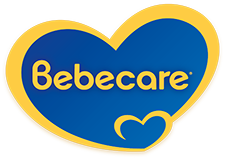
Time is Up!

Time is Up!
Please select an answer for each question
You answered ‘agree’ on
of the questions
 Tips
Tips
Additionally, the following tips will further assist you in helping your child’s growth in their strengths and weaknesses as well as allows you to have fun as a family!
At this age, your child may need to feel safe and that their needs for being taken care of and comforted are being met. Although, your child may not be very social at this time, your interaction with your child will help build the future foundation of their social and emotional skills.

It important to build a foundation of love, comfort, and trust with your child and as a family.

Cuddle, talk, and play with your baby during feeding, dressing, and bathing. Act excited and smile when your baby makes sounds.

Pay attention to your baby’s different cries so that you learn to know what he or she wants. Involve the whole family in talking, reading, and singing to your baby.

Use “reciprocal” play—when he or she smiles, you smile; when he or she makes sounds, you copy them.

Pay attention to the way he reacts to new situations and people; try to continue to do things that make your baby happy and comfortable.

Teach them cause-and-effect by rolling balls back and forth, pushing toy cars and trucks, and putting blocks in and out of a container or play peek-a-boo and hide-and- seek. Throughout their development, it is very important for your child to feel connected to you as a family.

While, at this age your baby may not be physically active or walking around, it is important to include them in your daily routines such as play or relaxing time and dinner time routines. This will help calm your child’s feelings as they begin to understand what to expect and gives you a daily opportunity to spend time together as a family.

Don’t forget to keep the mood light and have a good time

Please select an answer for each question
Disclaimer:
This quiz serves as a guide for your child’s development and is not intended to be used for diagnostic purposes. As a parent, you know your child best!
Breastfeeding is best for babies and provides many benefits. It is important that, in preparation for and during breastfeeding, you eat a healthy, balanced diet. Combined breast and bottle feeding in the first weeks of life may reduce the supply of your own breastmilk, and reversing the decision not to breastfeed is difficult. Always consult your doctor for advice about feeding your baby. If you use infant formula milk, you should follow manufacturer’s instructions for correct bottle preparation.
At Danone Nutricia Early Life Nutrition, we support the World Health organization’s global public health recommendation calling for exclusive breastfeeding for the first 6 months of life and continued breastfeeding for as long as possible with the introduction of safe and appropriate complementary foods thereafter.



 Tips
Tips
 Go back
Go back